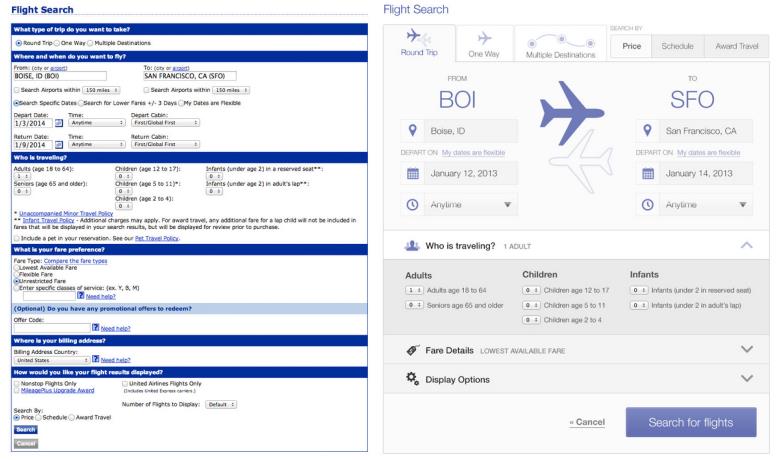How not to implement a web application interface
The creation of a web or local application must involve at least two players: a developer and a designer.
Interface design has revolutionized Apple in particular several times. The first progress was made through unification (during the Apple II): all programs had to use the same commands for the same functions, which was not the case before, it was necessary to retrain the keyboard with each software, and programmers, in particular, could not switch from one editor to another without retraining commands.
Then, based on the ideas developed in Palo Alto, a graphical interface with a mouse appeared. But then the firm constantly improved in this regard and since the iPod has never put the device up for sale without ideally developing a way to use it to provide the user with the most intuitive behavior. To do this, the programmers removed the task of designing interfaces.
A programmer is always the most qualified person to write a program, and sometimes he is able to implement an ideal interface. But this part is a fact of another profession. Some unfortunate experiences show this, such as Gnome Shell 3!
How not to implement the interface
- First define software functions and create for each command.
- Add functions after the function over time and add a button for each.
- Install the perfect interface for... programmer. Users are not always technicians and are not familiar with the arches of the program.
Good examples of bad ideas can be found in Windows, at least up to version 7 (I have not tried the next version). Every second time I click the file name, the system prompts me to rename it. Do you often rename files so often that you have to make this operation so direct? Don't think so. This is an idea that seemed interesting to programmers and which they implemented without taking into account the user's point of view.
Another anomaly always associated with renaming is the ability to block rename a group of files. I heard that some programmers appreciate the ability to rename project files into a block, but besides this, what is the point of giving the same name to several files? This happened to me sometimes, but by accident, because I did not see that the files were selected from a list outside the visible window... And then I had to look for what each file represents!
Windows has many examples of incorrect design choices. When you click on a window to see others, for example, it appears in a full-screen window and it's more than annoying. To give the user a better experience, we have to follow a few rules...

Another example... The above screen is that of an operator in Honolulu, who hastily ran a ballistic missile alert in the country when he just wanted to conduct a test. Specifically, he wanted to hit the "DRILL - PACKAGE (CDW) - STATE ONLY" button and hit the "PACKAGE (CDW) - STATE ONLY" button.
No request for confirmation, no way to go back! Also, it would be wise to separate the Test teams from the actual...
How to create an interface
- You need to completely get rid of his experience and be able to take the place of a completely novice user.
To try to present ourselves in a foreign country whose language and customs we do not know to cope with signposts to find the necessary services . - Define the interface independently of the software. An attempt will then be made to associate the code with user actions.
- Use the framework for your preset widgets and use it at best, creatively.
- Create a layout before building the interface, present it in action, plan all user actions and find simplifications.
- Delete all unnecessary steps in the task. For example, group functions on one page whenever possible.
- Re-read the principles of web design.
Here's an example of a form made by programmers and remade by a designer...

A little nicer, isn't it? (Reference: Nathan Barry).
See also